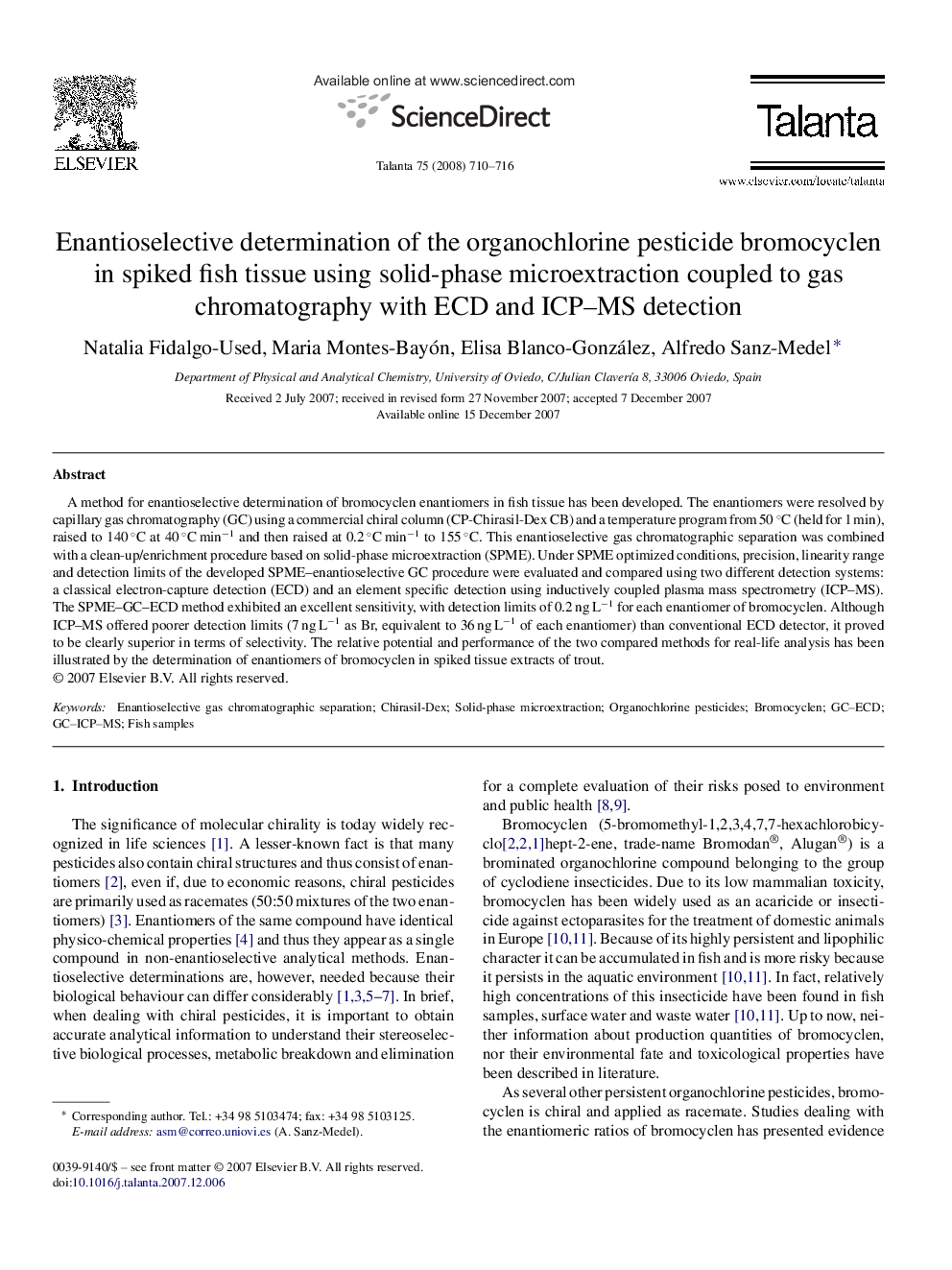| Article ID | Journal | Published Year | Pages | File Type |
|---|---|---|---|---|
| 1245577 | Talanta | 2008 | 7 Pages |
A method for enantioselective determination of bromocyclen enantiomers in fish tissue has been developed. The enantiomers were resolved by capillary gas chromatography (GC) using a commercial chiral column (CP-Chirasil-Dex CB) and a temperature program from 50 °C (held for 1 min), raised to 140 °C at 40 °C min−1 and then raised at 0.2 °C min−1 to 155 °C. This enantioselective gas chromatographic separation was combined with a clean-up/enrichment procedure based on solid-phase microextraction (SPME). Under SPME optimized conditions, precision, linearity range and detection limits of the developed SPME–enantioselective GC procedure were evaluated and compared using two different detection systems: a classical electron-capture detection (ECD) and an element specific detection using inductively coupled plasma mass spectrometry (ICP–MS). The SPME–GC–ECD method exhibited an excellent sensitivity, with detection limits of 0.2 ng L−1 for each enantiomer of bromocyclen. Although ICP–MS offered poorer detection limits (7 ng L−1 as Br, equivalent to 36 ng L−1 of each enantiomer) than conventional ECD detector, it proved to be clearly superior in terms of selectivity. The relative potential and performance of the two compared methods for real-life analysis has been illustrated by the determination of enantiomers of bromocyclen in spiked tissue extracts of trout.
